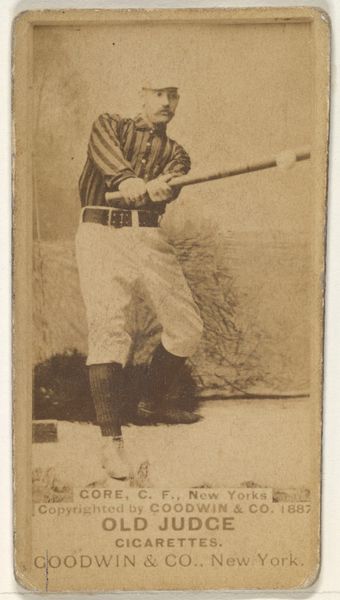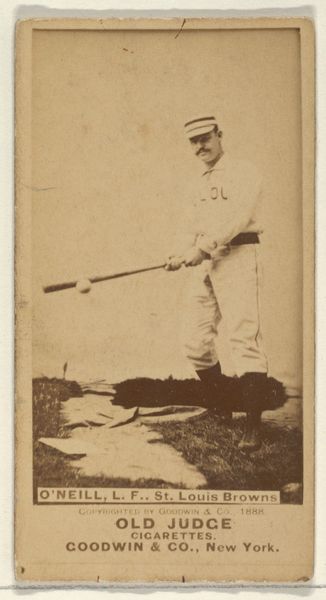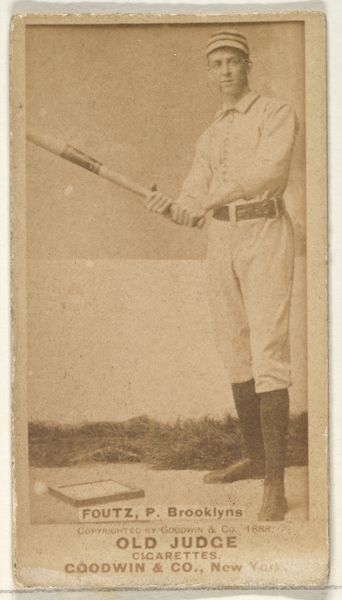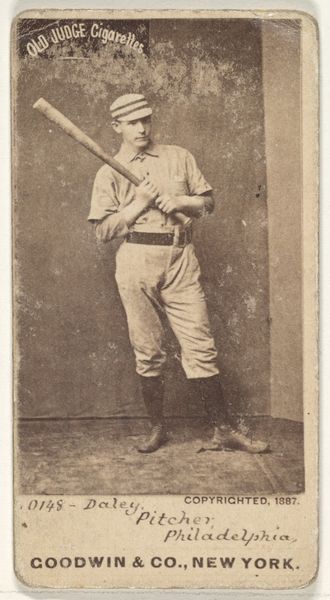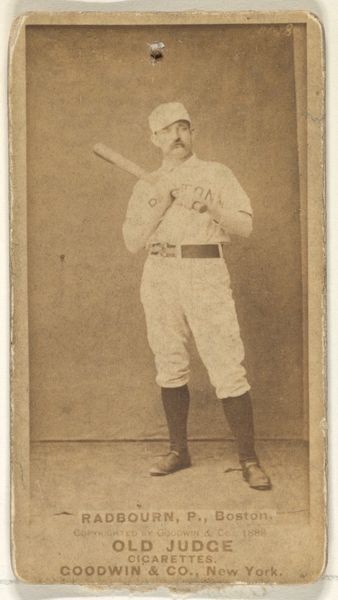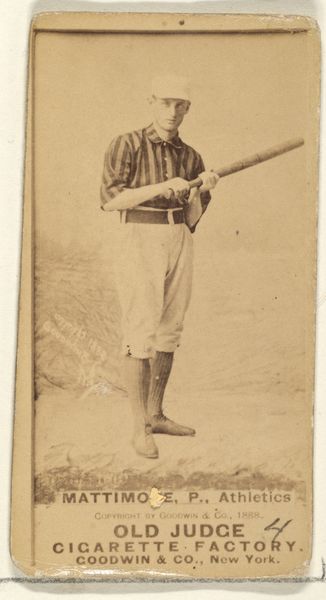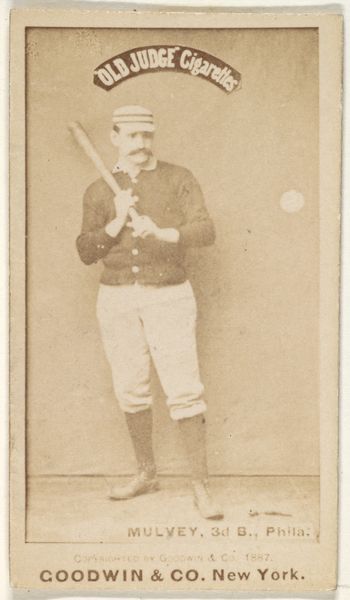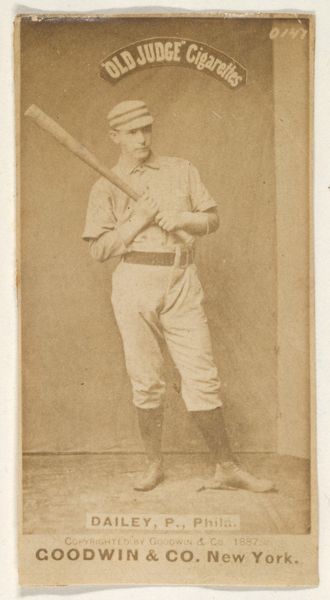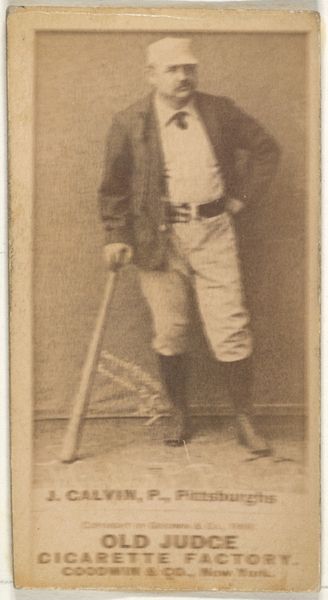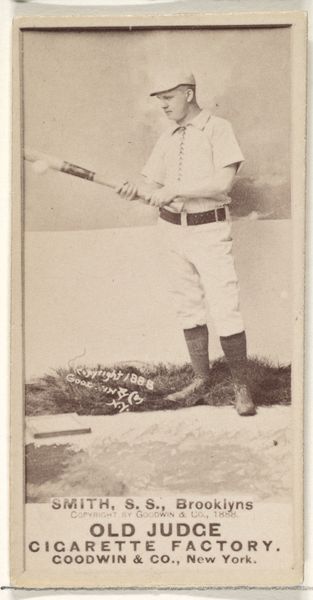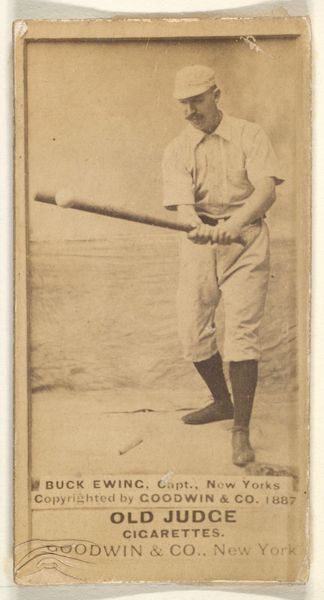
George F. "Piano Legs" Gore, Center Field, New York, from the Old Judge series (N172) for Old Judge Cigarettes 1887
0:00
0:00
lithograph, print, photography
#
portrait
#
lithograph
# print
#
photography
#
watercolour illustration
#
genre-painting
Dimensions: sheet: 2 11/16 x 1 3/8 in. (6.9 x 3.5 cm)
Copyright: Public Domain
Editor: Here we have an 1887 lithograph, "George F. 'Piano Legs' Gore, Center Field, New York, from the Old Judge series (N172) for Old Judge Cigarettes," by Goodwin & Company. It's striking how this baseball player, posed mid-swing, is immortalized on what's essentially an advertisement. What stands out to you when you look at this, particularly considering it was created for a cigarette brand? Curator: Well, immediately the anachronism is glaringly apparent. Linking athleticism and health, as baseball is implicitly doing, with cigarettes is an intentional manipulation of symbols. How does the player's stance itself strike you? Editor: He seems focused, ready for the pitch. There's a tension, despite it being a still image. Curator: Precisely. And what does the name "Old Judge" evoke for you, combined with the imagery? Doesn't it bring a sense of authority, tradition, and even a certain level of trustworthiness to mind? The brand leverages these associations. Think about it – they're using the all-American, virtuous game of baseball, associated with idealized, virile players, and the respected figure of a judge, to subliminally market a harmful product. Editor: That's a clever, or rather, manipulative connection I hadn't considered. So, the image isn't just a portrait, it's a carefully constructed symbol within a broader cultural narrative? Curator: Absolutely. The success of these cards depended on layering multiple symbols: baseball (patriotism, leisure, the active life), the player as a hero, the endorsement of a dependable-sounding brand… It’s an incredibly effective early example of using cultural capital to sell a product, shaping not just consumer choices, but the very memories attached to a cultural icon. It encourages one to ask: How can a symbol stand to function outside its time, and against all better knowledge? Editor: That's given me a whole new perspective on how even something as seemingly simple as a baseball card can be a complex piece of cultural commentary. It goes to show that nothing is truly neutral! Curator: Exactly. It encourages us to be more attentive, more critical, towards the symbolic language that surrounds us every day.
Comments
No comments
Be the first to comment and join the conversation on the ultimate creative platform.
